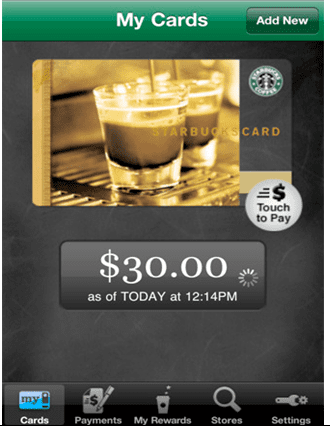7 Tips to win the hearts, minds and wallets of mobile shoppers
A recent Google survey shows the importance of mobile in driving shopper behaviour today – at every stage in the customer journey.
- Pre-shopping: 58% of the sample use their mobile to locate stores, 57% check store hours and 44% browse retailers’ mobile sites.
- In-store: 84% of shoppers are using mobiles devices in-store. 62% access store websites, 50% access brand sites and 21% use store apps.
7 Tips to engage and transact mobile shoppers
This post picks out 7 tips to engage and transact with today’s mobile shoppers across multiple devices and throughout the purchase cycle.
If you're to evaluate the wider developments in mobile marketing that will be important in 2014, see my free webcast.
-
1. Personalising the shopping experience
In its study 'The Future of Shopping’ commissioned by The Marketing Store, the Future Foundation sets out a vision of the retail world.
One of the main themes is ‘Me-tail’ – using technology to personalise all aspects of the shopping experience - from the product itself, to pricing and customer service will be a fundamental aspect of future retail reflecting individual shopper needs.
Early trials by Starbucks show this is happening already: a customer can place her specific order while in traffic in the taxi, present her phone to the barista at the head of the fast-track collection point, make the payment, and top up her loyalty account without having to wait in line or find her purse. Starbucks is now taking 15% of its weekly sales via mobile.

-
2. Building loyalty with Mobile
Today’s shoppers are more promiscuous than ever.
In its paper 'The Dawn of Mobile Influence: Discovering the Value of Mobile in Retail', Deloitte estimates smartphone influence on department store sales is due to grow from 7% in 2012 to 24-27% by 2016. For every $1 spent on mobile, mobile is influencing $13 in store sales.
Shoppers want to know which retailers offer the best range of products, the most competitive prices, the most friendly and knowledgeable sales staff, the best customer service, and those that fall short. Today’s mobile shoppers are checking what others think by checking ratings and reviews online, on mobile sites or apps can be your greatest brand advocates or loudest detractors within their circles.
So, it’s vital we deliver an exceptional mobile experience – in store, and to shoppers handsets wherever they are searching for product information.
-
3. Fine tuning the in-store experience
Burberry has raised the bar for high end retailers embracing digital. Outgoing CEO Angela Ahrendts described her vision to deliver an in-store experience matching the best online shopping experience. Burberry shop staff are using iPads to bring a whole wealth of product info to their shops, and use them to provide richer customer service.

In-store WiFi plays a key role here. The IAB’s Mobile Retail Audit shows 14% of the UK’s top 50 retailers offer WiFi already. At a recent retail event, Waitrose noted that CCTV footage shows shoppers abandoning baskets in the aisles which had no mobile signal.
But in a world dominated by screens and new technology, let’s not forget shoppers like human contact and ways of experiencing the retail world. They seek excitement and discovery and engagement enabled via technology.
New Look’s flagship store in Dublin is a great example. Shoppers are invited to become ‘star models’ by trying on their favourite fashions, having their photos taken which appear on interactive in-store screens. Their favourite poses can then be shared with their social networks via mobile.
-
4. Tackling the 'showroomers'
Whilst some shoppers want to engage with shop staff, others prefer to find their own product info, browse sites, check and leave reviews, and search for comparative prices.
'Show rooming' is a major challenge: shoppers seek out, touch and feel the products they’re interested in, but not necessarily to make a purchase. Google estimates 44% of smartphone users run price comparison searches whilst shopping, and 17% change their mind about product selection based on smartphone searches.
The High Street has become the 'Try Street'.
-
5. Optimising your Mobile user experience
Mobile optimised sites are critical for brands wanting to retain customers and prevent mobile savvy competitors from eroding their share. The good news is that retailers have been quick to see high traffic flows from mobile, and build mobile-optimised sites.
Back to the IAB survey: 74% of the top 50 retailers have optimized sites. If you have not, you’ll maximize repeat views by designing a site which looks and feels like an app (HTML5), and includes a store finder, product reviews, ‘click and collect’.
Think again about personalisation, pushing time and location based content. Detailed tracking of in-app user sessions, and linking the session back to your customer records, offers the potential to send targeted in-app push notifications which trigger repeat app use and purchase.
-
6. Mobile payments exploding
All eyes are watching this one intently. In Q2 2013, mobile accounted for 23.2% of online sales, tracking at 100% growth over the same period in 2012.
All the ingredients are in place for sustained growth here: consumer demand, handset capabilities and an investment community hungry for trusted and secure mobile payment platforms to unlock massive growth potential on a global scale.
Let’s look at PayPal’s own forecasts for mobile payments globally: $700m in 2010, growing to $25bn in 2013.
Monitor your customers’ preferred payments channels: Mobile web-based payments; In-app payments; Operator-billing; Payment-specific apps; Mobile wallet; Contactless payments (NFC). It’s highly unlikely there will be one outright winner in the battle for mobile payments. For an analysis of the main payment platforms, take a look at the mobile payments section of the IAB’s Big Mobile Shopping Handbook.
-
7. Building the single customer view
Multi-channel shoppers are more valuable than single channel shoppers, in shopping frequency and basket value. For most retailers, the vital question is verifying whether the person browsing your mobile site or downloading your app is a new customer or the same customer who’s already spending online or carrying a loyalty card and visiting your shop.
The challenge here is tracking behaviour without compromising user experience: whether getting site users to complete a registration form on your site, or adding SDK code into your app to get detailed customer journey data. Getting the balance right will deliver the detailed insights you need to segment your mobile shoppers and deliver micro-targeting which maximizes conversion.

Thanks to Rob Thurner for sharing his thoughts and opinions in this blog post. Rob is a mobile consultant, author and trainer. He is Founding Partner of
Burner Mobile, the consultancy which helps clients to develop and scale their mobile strategies. He has written
two books on Mobile Marketing best practice. For a free 'mobile healthcheck', which looks into all of these points, please email rob -
[email protected] and can connect with him on
LinkedIn.





 Thanks to Rob Thurner for sharing his thoughts and opinions in this blog post. Rob is a mobile consultant, author and trainer. He is Founding Partner of
Thanks to Rob Thurner for sharing his thoughts and opinions in this blog post. Rob is a mobile consultant, author and trainer. He is Founding Partner of 


